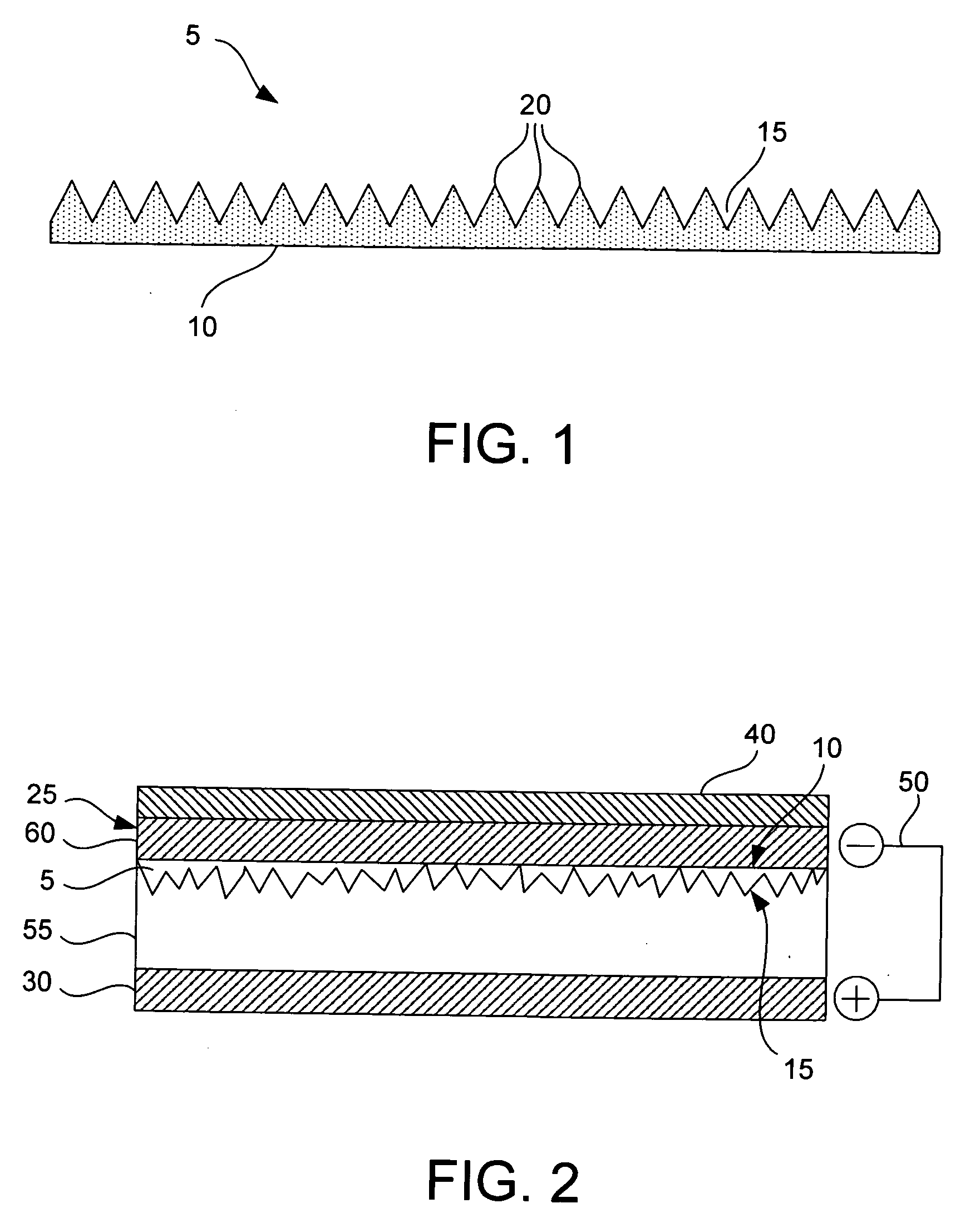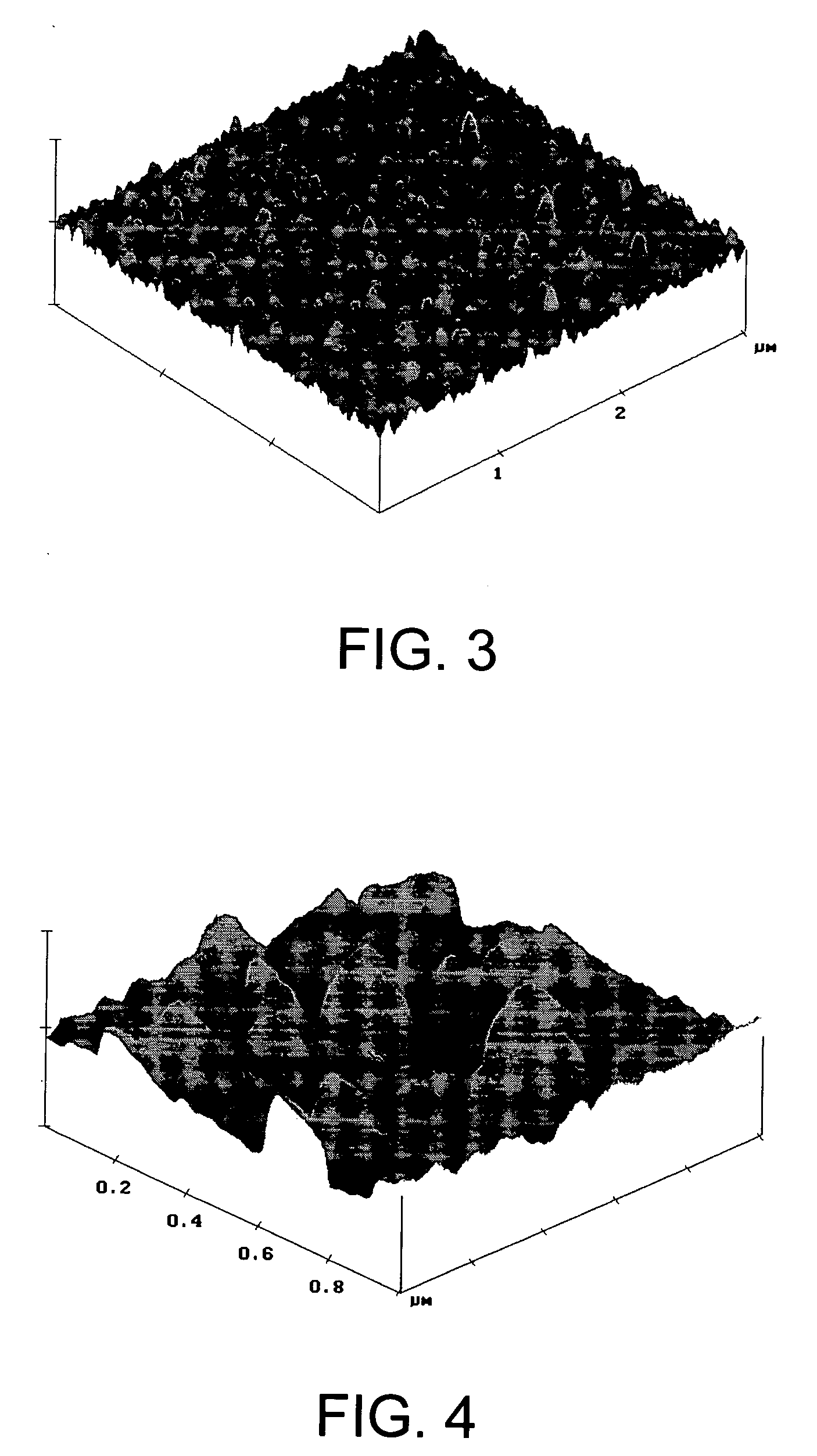Diamond-like carbon devices and methods for the use and manufacture thereof
- Summary
- Abstract
- Description
- Claims
- Application Information
AI Technical Summary
Benefits of technology
Problems solved by technology
Method used
Image
Examples
example 1
[0105] A copper foil is glued to a polyimide support layer. A one micron layer of amorphous diamond is deposited on the exposed copper foil electrode using a cathodic arc process. The amorphous diamond has a 50 nm asperity. An intermediate layer of PZT is deposited by screen printing to a thickness of 30 μm on the amorphous diamond. A layer of silver grease is coated on the PZT intermediate member by screen printing to form an anode. The assembly is then cured in an oven to drive off the binder used in screen printing and to consolidate the device. Attachment of wires to the copper electrodes can allow this thermoelectric conversion device to act as either an electrical generator by absorption of heat or as a cooling device by application of an electrical current.
example 2
[0106] The same procedure is followed as in Example 1, except the PZT layer is replaced by a mixture of graphite powder and hexagonal boron nitride powder.
example 3
[0107] The same procedure is followed as in Example 1, except the PZT layer is replaced by a mixture of graphite powder and aluminum oxide powder.
PUM
 Login to View More
Login to View More Abstract
Description
Claims
Application Information
 Login to View More
Login to View More - R&D
- Intellectual Property
- Life Sciences
- Materials
- Tech Scout
- Unparalleled Data Quality
- Higher Quality Content
- 60% Fewer Hallucinations
Browse by: Latest US Patents, China's latest patents, Technical Efficacy Thesaurus, Application Domain, Technology Topic, Popular Technical Reports.
© 2025 PatSnap. All rights reserved.Legal|Privacy policy|Modern Slavery Act Transparency Statement|Sitemap|About US| Contact US: help@patsnap.com



